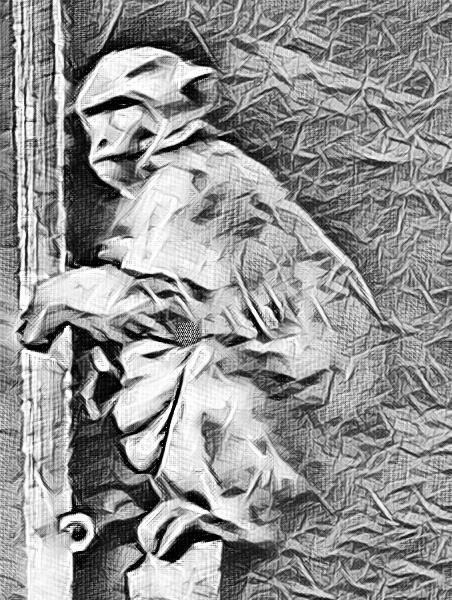Usually, the onions are ready for harvesting in the summers. For storing the onions, the Ulligadda Mande were constructed. Mande is an elongated structure, prepared with the stone pillars and the walls are covered with Kandi Katte or pigeon pea sticks. The top was covered with grass. The porous shelter with good aeration increased the storability of the onions. The ploughed onions are collected and the women by sitting under the shade of tamarind trees cleaned them of the straw and stored in the Mande.
Villagers, especially women and children were afraid when they saw Kodangalu - they are the black-faced Langoors, in the village. Kodangalu damaged the crops and especially loved to eat onions and the fruits of Cheema Chintakaya. By jumping over the roof, they also broke a few roof tiles. Similarly, the monkeys (Rhesus macaques) in the villages also caused lots of damage.
In the Bundelkhand region, when I visited the villages, it was strange that there were not many big trees. The farmers said that the monkeys are a menace here and eat away the crops, so they don’t grow the trees bid and also chopped down the existing big trees. The trees are favoured by the monkeys to use them as their home too during the nights. The people respect monkeys and they are in millions in and around the town. One gets to see the most intelligent monkeys in the Karwi railway station.
Also in Mathura and Brindhavan cities of Uttar Pradesh State, there are many monkeys. People have taken all kinds of protection measures, to prevent them from entering their homes. For the monkey’s sake literally every home is modified as a prison with iron grills and barbed wire, and the people are living in them.

A Rhesus Macaque, most commonly found monkey in India




